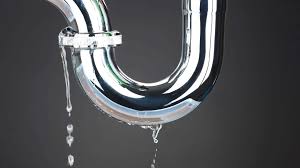A leaking water pipe can be a frustrating and potentially costly problem if not addressed promptly. Whether it’s a small drip or a major leak, knowing how to fix it can save you time, money, and prevent further damage to your home. In this guide, we’ll walk you through the steps to identify, troubleshoot, and repair a leaking water pipe.Step 1: Turn Off the Water SupplyBefore you begin any repairs, it’s crucial to turn off the water supply to the affected pipe. Locate the main water shut-off valve in your home and turn it clockwise to stop the flow of water. This will prevent further leakage and allow you to work safely.Step 2: Identify the Source of the LeakInspect the pipe carefully to determine where the leak is coming from. Common causes of leaks include:
- Corroded or damaged pipes
- Loose fittings or connections
- Cracks or holes in the pipe
- High water pressure
Step 3: Gather the Necessary Tools and MaterialsTo fix a leaking water pipe, you’ll need the following tools and materials:
- Pipe wrench or adjustable pliers
- Pipe tape (Teflon tape)
- Epoxy putty or pipe clamps
- Sandpaper or emery cloth
- Replacement pipe or fittings (if necessary)
Step 4: Repair the LeakDepending on the type and severity of the leak, you can use one of the following methods to fix it:
- For small leaks: Wrap the affected area with pipe tape or apply epoxy putty to seal the leak temporarily.
- For loose fittings: Tighten the connections using a pipe wrench or pliers. If the fittings are damaged, replace them.
- For cracks or holes: Use a pipe clamp or replace the damaged section of the pipe entirely.
Step 5: Test the RepairOnce you’ve completed the repair, turn the water supply back on and check for any signs of leakage. If the leak persists, you may need to revisit the repair or consider calling a professional plumber.Preventive MeasuresTo avoid future leaks, consider the following tips:
- Regularly inspect your pipes for signs of wear or corrosion.
- Maintain moderate water pressure to reduce stress on the pipes.
- Insulate pipes in cold areas to prevent freezing and bursting.
When to Call a ProfessionalWhile many minor leaks can be fixed DIY, some situations require professional assistance, such as:
- Major pipe bursts or extensive damage
- Leaks in hard-to-reach areas
- Persistent leaks despite repairs
By following these steps, you can effectively address a leaking water pipe and prevent further issues. Remember, timely action is key to minimizing damage and ensuring the longevity of your plumbing system.

